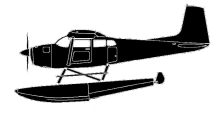
ASN Wikibase Occurrence # 23186
This information is added by users of ASN. Neither ASN nor the Flight Safety Foundation are responsible for the completeness or correctness of this information.
If you feel this information is incomplete or incorrect, you can submit corrected information.
| Date: | Saturday 29 June 2002 |
| Time: | 22:30 UTC |
| Type: |  Cessna A185F |
| Owner/operator: | Transwest Air Limited |
| Registration: | C-GALM |
| MSN: | 18503711 |
| Year of manufacture: | 1979 |
| Fatalities: | Fatalities: 1 / Occupants: 3 |
| Aircraft damage: | Substantial |
| Category: | Accident |
| Location: | Engemann Lake, Saskatchewan -
 Canada Canada
|
| Phase: | Take off |
| Nature: | Passenger - Non-Scheduled/charter/Air Taxi |
| Departure airport: | Engemann Lake, Saskatchewan |
| Thomson Lake, Saskatchewan | |
| Investigating agency: | TSB |
| Confidence Rating: |
At approximately 1410 central standard time, a float-equipped Cessna A185F seaplane, registration C-GALM, serial number 18503711, was taking off from Engemann Lake, Saskatchewan, on a visual flight rules (VFR) flight to Thomson Lake with the pilot and two passengers on board. The aircraft was about 10 to 15 feet above the water, established in a wings-level, nose-up climb attitude, when the pilot glanced to the left. Before the pilot was able to look back to the front, the aircraft struck the water, overturned, and began to sink. The pilot and front-seat passenger escaped from the sinking aircraft and survived. The second passenger, in the left rear seat directly behind the pilot, sustained serious injuries to the legs, chest, and head during the impact, did not escape from the aircraft, and drowned. The aircraft was substantially damaged. The accident occurred during daytime visual meteorological conditions.
Findings as to Causes and Contributing Factors
1. The horizontal stabilizer trim was set to a nose-down setting, resulting in a need for the pilot to maintain back pressure on the control column to hold a nose-up climb attitude.
2. The pilot most likely unintentionally relaxed the control column back pressure after take-off, causing the aircraft to pitch nose down and strike the water.
Accident investigation:
 |
|
Sources:
TSB
Revision history:
| Date/time | Contributor | Updates |
|---|---|---|
| 27-Sep-2008 01:00 | ASN archive | Added |
| 23-Oct-2023 15:31 | harro | Updated |
Corrections or additions? ... Edit this accident description
The Aviation Safety Network is an exclusive service provided by:


 ©2024 Flight Safety Foundation
©2024 Flight Safety Foundation